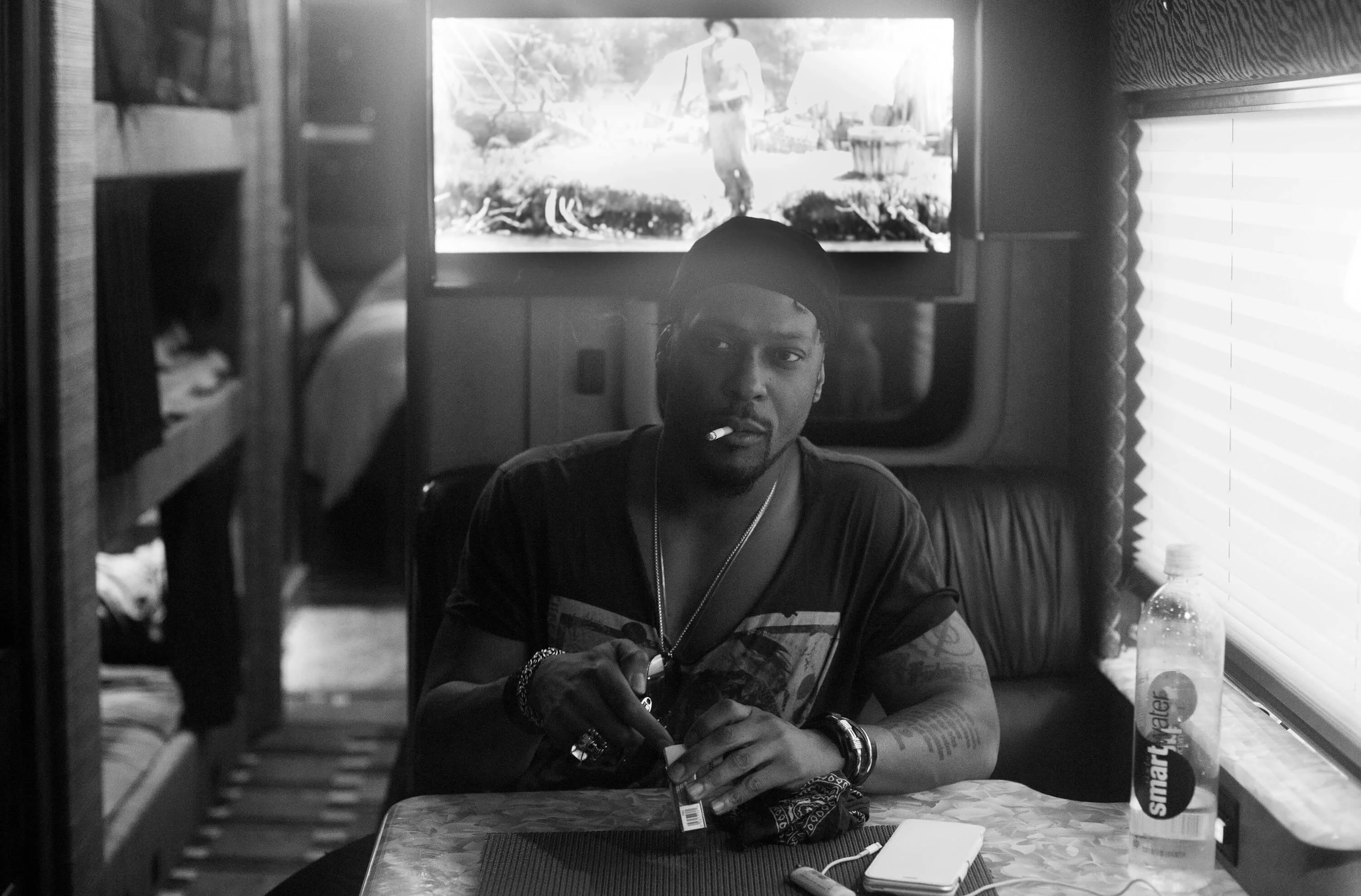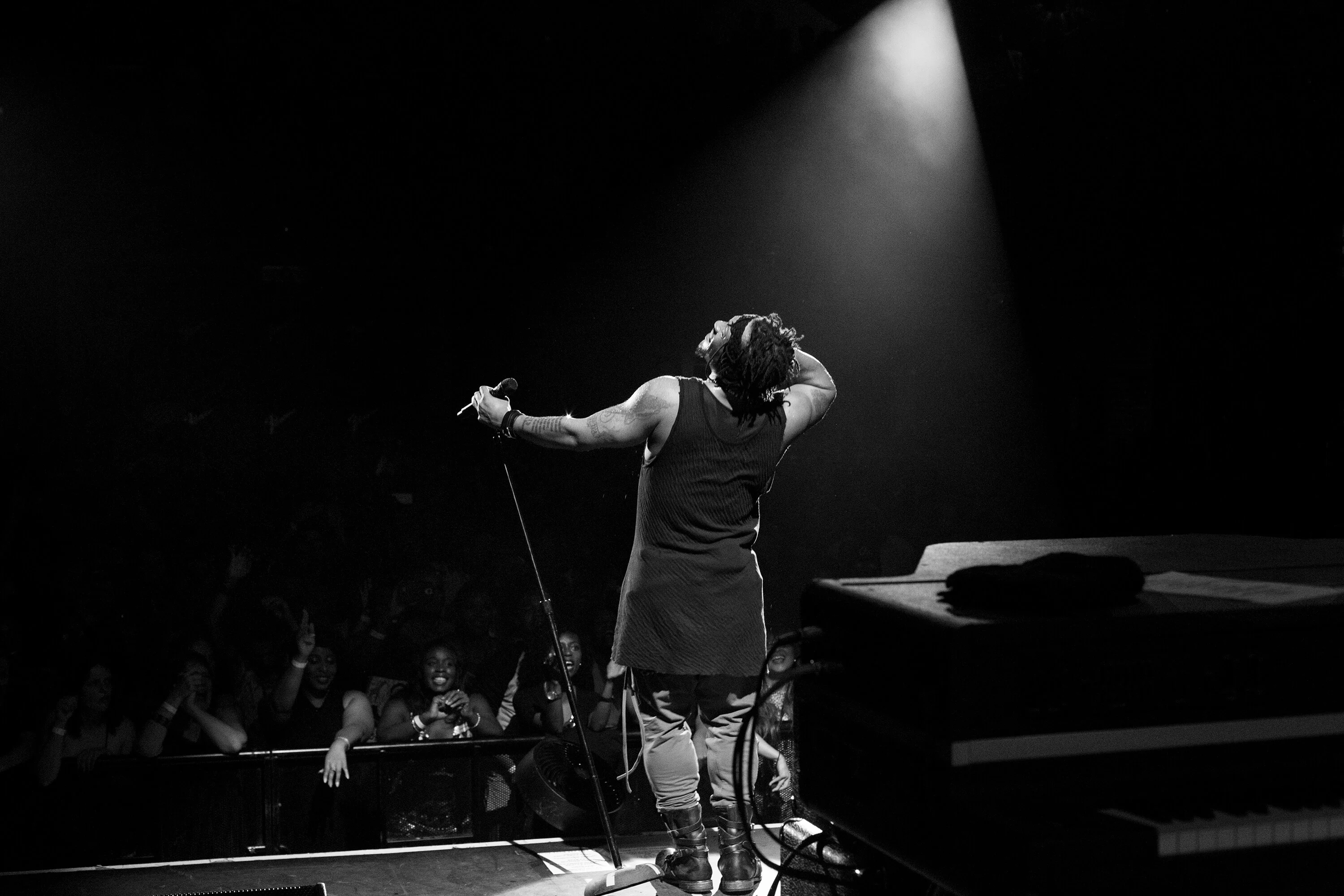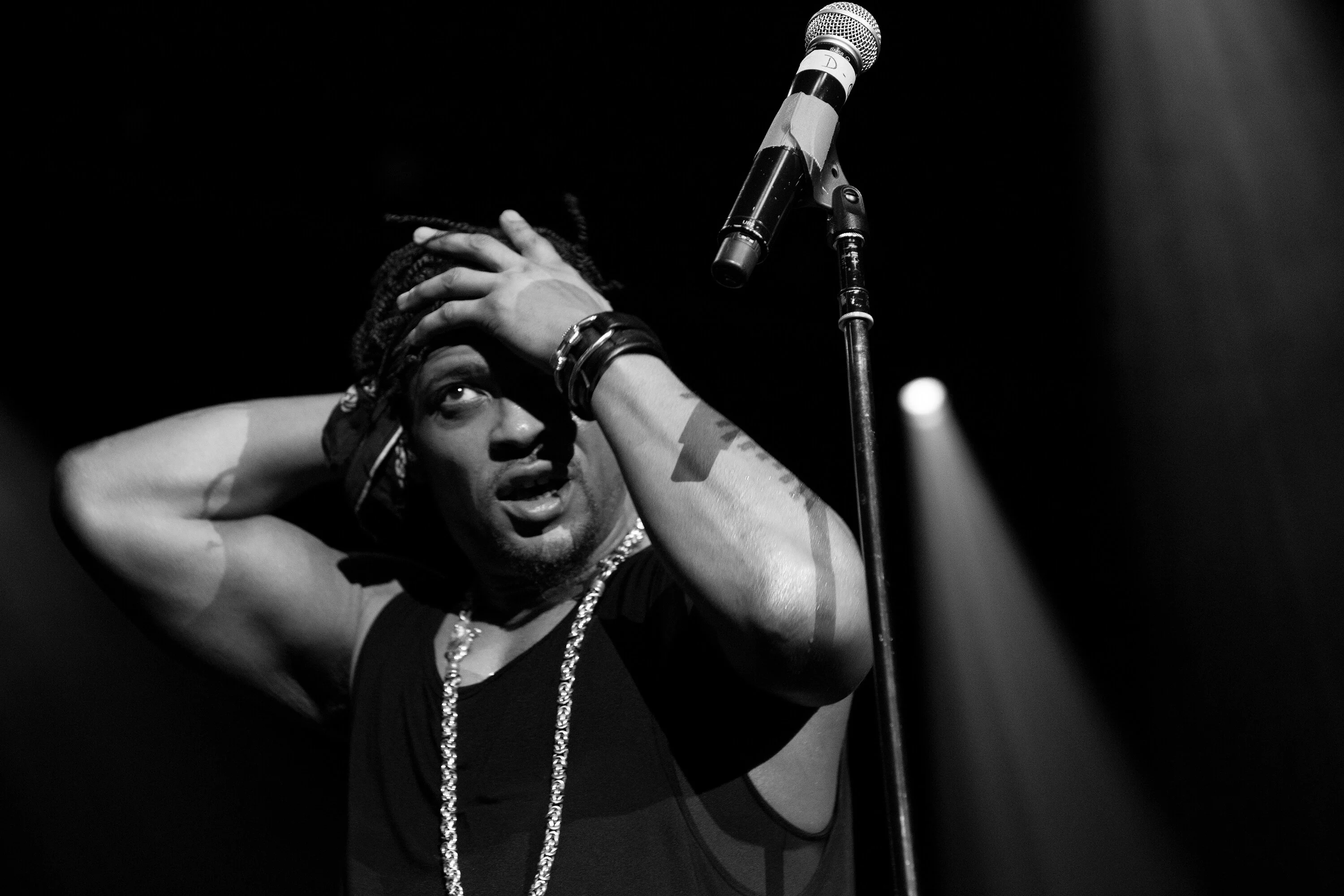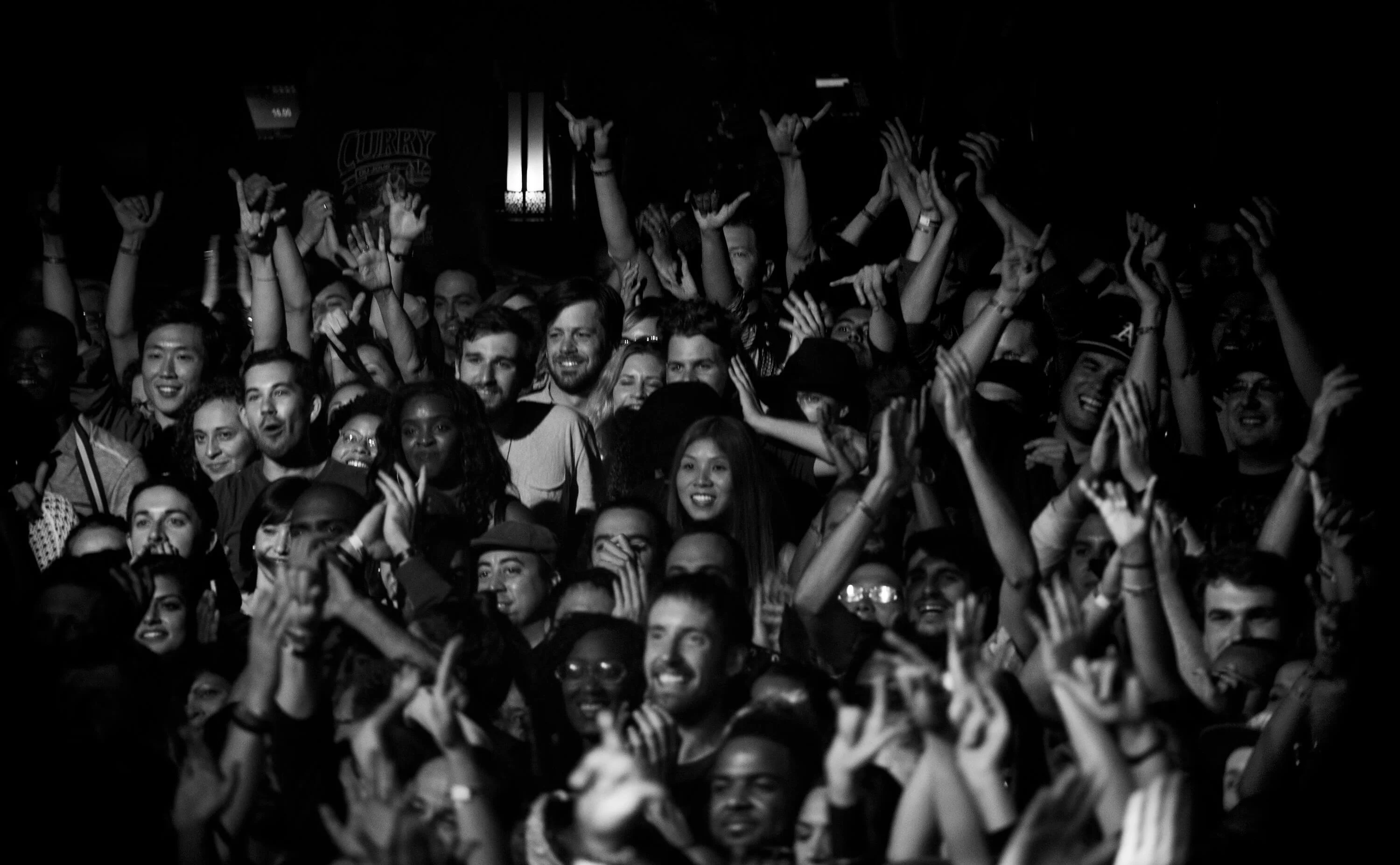

Widely regarded as one of the most influential musicians of his generation, D’Angelo was primed for superstardom in the early noughties until he, seemingly, disappeared. A lifelong fan director Carine Bijlsma wanted answers, and so began her quest to document one of music’s most enigmatic men, resulting in a captivating film and set of never-before seen images. Writer Kemi Alemrou delves into Carine’s creative process in order to unpack almost a decade’s worth of work.
We're pretty much in the same situation now as we were when Carine Bijlsma first set the wheels in motion for her fly-on-the-wall feature-length documentary Devil's Pie, charting the career of one of music’s most elusive geniuses. Once again, D’Angelo has dropped off the radar and recently cancelled a sold-out tour (although there are whispers of an upcoming album). At least this time, though, we have way more insight as to why D'Angelo shies away from the hungry glare of his loyal fanbase whose commitment hasn't waned since his meteoric rise at the turn of the millennium.

D’Angelo’s artistry is one that you only encounter once in a generation: an instantly recognisable voice that oscillates from an almost impossibly high timbre to soulful lows and an expert eye on every last detail of his music. His seminal discography is a rich blend of funk, gospel, soul, and hip hop. Though he was poised for superstardom, not long after his platinum-selling second studio album Voodoo was released in 2000, he disappeared from view. Around 2012, filmmaker Carine Bijlsma wondered: why?
“All I found were a handful of articles that were basically just saying: 'What the hell happened?' There weren't any answers. He just disappeared,” she says over the phone from her home in Amsterdam. “I was really curious why such a beautiful instrument would hide themselves like that.” That year he re-emerged performing dates in Europe where Bijlsma saw him. Determined to understand more she began sending letters and eventually found the email of Kendra Foster who was singing back up in D’Angelo’s band. She proposed a documentary that focussed on his artistry rather than the tabloid rumours that swirled in his absence. “I wasn't really interested in knowing the story of the hero that loses himself in drugs and finds himself again. That's been told many times,” she explains.


But then, the seemingly impossible happened. D’Angelo called Carine up and invited her to fly out to Vegas to follow him on the Black Messiah tour. She explains: “He really liked my perspective. The trust was instant.” Seven years later the film debuted at the Tribeca Film Festival last year to widespread acclaim. Through her lens we see a musician caught between the conflicts of his hypersexual image –which reached its peak with his oiled up semi-nude music video for “(Untitled) How Does It Feel” – and his influential Christian upbringing.
Carine’s work on Devil’s Pie offers the world an answer to a question they believed was almost too futile to ask. “I think nobody knew who he really was, what he's like, how he talks. He barely does any interviews,” she says. “But this really gives you an insight into his inner conflict, why he steered away for so long. You get an in-depth look into his character. He’s shy, but then he’s fearless.”

I was curious why such a beautiful instrument would hide themselves like that.
Throughout her career the director has been fine-tuning how to capture the essence of her protagonists and the world they inhabit. “When you make films, you have to think about what the artist is like and what works for this person; one artist might like five cameras in the room and the other artists might like just you. You have to tailor it,” she explains. “ a very introverted person so it wasn't a big set up. It was just a really intimate atmosphere.”
Carine joined D’Angelo on the tour, travelling with his team on the bus and observing rehearsals. “Our first rehearsal event was really beautiful,” she says. “I knew the music so well it was like in Mary Poppins when they jump into the painting, it was also actually this tactile world.”

As artists, Carine and D’Angelo actually share commonalities. They’re both deeply introspective creatives that don’t just think of people as an audience or as vehicles for their own ambition – they’re always measuring the weight of their impact. D’Angelo struggled when his status as a sex symbol started to interfere with live performances and he’s spent years reconciling with how his output affects the audience. One scene shows him scrolling through social media posts being reassured by his team that his live shows are being well-received and understood. As she puts it: “You have to be sensitive as an artist to make great art. That's a blessing and a curse, in a way.”
Likewise, Carine’s measured treatment of D’Angelo is indicative of the opportunity she had been given. Each scene peels back another layer of his character. For example, her lens reveals the duality of the singer. Electric live performances contrast to archive footage of his humble beginnings, singing and playing the piano to a church congregation who praise the Lord for his gift. Both sit alongside calm introspection and revealing chats which bulldoze through the walls he’s built up through the years.

I wasn’t really interested in knowing the story of the hero that loses himself.
Gaining access to watch all of these surreal moments without making her subjects feel uncomfortable may seem like a tricky task but to her, that’s an easy feat. “You just have to be trustworthy and make sure you're honest about who you are and your intentions,” she says. “It's not my set, it's their situation, their experience and I am there to capture it... not to make it about me and take over. My only job is to not kill the vibe basically.”
Admirably, she doesn’t find it hard to blend into these worlds. That’s down to more than her resume (“I've been making music documentaries back to back ever since I graduated”), it’s reflective of her upbringing. “I'm the daughter of two musicians, so music was always my daily bread. It was the world that I grew up in, it was the closest to my heart,” she says.


Through her gaze, we follow D’Angelo as he wanders backstage or through hotel hallways. We see his adrenaline-fuelled sets and his anxiety. But knowing the sensibilities of musicians on tour also meant that she never crosses the line with the extremely private singer.
She adds: “When I was a kid I knew if my mom had a show I shouldn't ask anything from her, I knew the moments when they were focusing and the moments when I could ask for attention. And this goes through my mind when I'm shooting as well.”
Since 2008, the Dutch filmmaker has chronicled the careers and performances of composer Louis Andriessen, conductor Reinbert de Leeuw, composer Luigi Boccherini and Dutch cellist Anner Bylsma. While these names are not usually mentioned in the same circles as the neo-soul posterboy the link between these projects is that they’re all an intimate watch - not least because the latter is her own father. “I really like what I capture to be an experience like you’re in the room,” she says.

Now is the culmination of almost a decade’s worth of working either alongside D’Angelo or on documenting as much as he is willing to show her. “There’s so much I have that I want to share,” she says. Just as the film isn’t short on cameos – he possesses the humility of a junior climbing the ranks during backstage chats with his famous fans such as comedian Dave Chapelle, and rap-legend Busta Rhymes – neither are Carine’s previously unreleased photographs, seen for the first time here. In one, D’Angelo sits in an old Ford with Black Panther co-founder Bobby Seale. The rest of the black and white photographs not only capture his on-stage extroversion but the expression of his adoring fans who are lucky enough to catch their own glimpse.
“Maybe people will feel a little bit more grateful to the genius that he is,” she says. “Now he’s allowed us to step into his world.”

